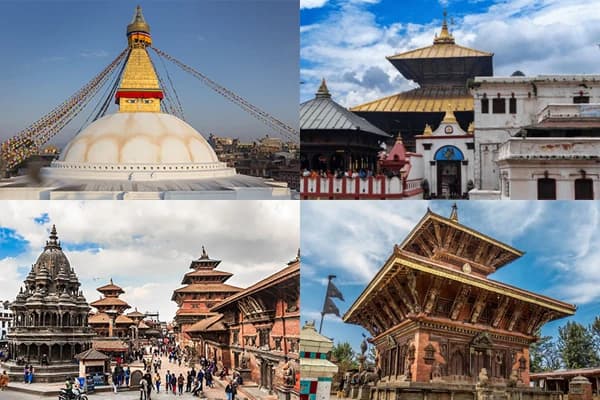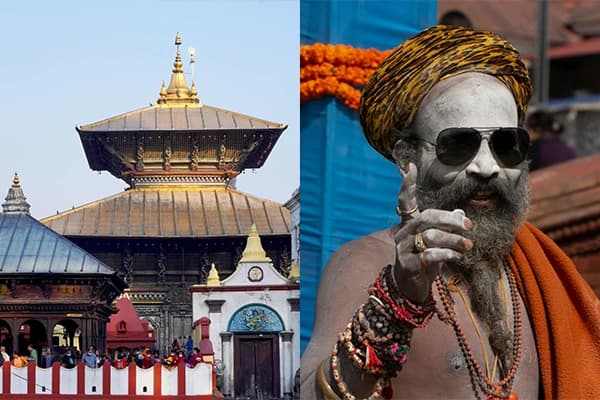General Rules for Flying Drones in Nepal
- You have to get prior authorization from the Department of Tourism, Ministry of Home Affairs, and CAAN Nepal if you want to fly a drone weighing more than 2 kg above 400 ft.
- There are height restrictions on the drone. You can’t fly a drone higher than 100 meters (above ground level) and not further than 500 meters (horizontal distance from the remote pilot).
- You cannot fly the drone 30 meters near a person who is not associated with the drone operations.
- Flying drones in airport zones, government buildings, and sensitive locations is strictly prohibited.
- You have to get special permissions for the different types of drone operations, even if you are doing government operations or tourist flights.
- You cannot operate two drones at once.
- All the drones must be registered with the CAAN Nepal.
- You can’t fly the drone over crowded areas or other social gatherings.
- You can't fly the drone where fire, police, or other public safety or emergency operations are being conducted without the approval of a person in charge of the operation.
- Foreign visitors can fly drones with permits from relevant government bodies.
- The drone must be operated within the visual line of sight of the person operating the drone.
Drone category in Nepal
The drone is categorized as per Maximum Takeoff Weight (MTOW) by CAAN Nepal. Some of the drone categories by CAAN Nepal are given below.
- Category A: Very Low-Risk Drones
The very low-risk drones are those that weigh less than 250 grams. This drone is considered a minimal-risk drone due to its small size and weight. Very low-risk operations are conducted using these drones.
- Category B: Low-Risk Drones
The drones weighing 250 grams to 2 kg are called low-risk drones. And operation of this drone falls under low-risk operations. This drone operator has to follow rules and guidelines as compared to the very low-risk drone operators.
Low-risk drones are heavy and big compared to very low-risk drones. You can fly the drone below 200 ft on your private property without a CAAN permit.
- Category C: Regulated Low-Risk Drones
The regulated low-risk drones include drones weighing 2 kg to 25 kg. These drones have more risks compared to low-risk drones. The operations of these drones come under regulated low-risk operations.
- Category D: Regulated High-Risk Drones
Drones that weigh more than 25 kg are called regulated high-risk drones. You have to follow strict rules and regulations if you want to use these types of drones. It comes with a huge body as well as huge risks. Regulated, high-risk operations are conducted using these drones.
Drone Registration and Licensing
According to the drone laws in Nepal, you need to register your drones with the Civil Aviation Authority. Furthermore, you need to have permits from the Department of Tourism, Ministry of Home Affairs, and CAAN Nepal for legal drone flights in Nepal. Only after obtaining registrations and drone flight permission from the official departments, you can fly a drone in Nepal.
For CAAN drone registration in Nepal, you will need the make, model, weight, serial number, and owner’s details at the time of registration. While it is not fixed, ownership proof like purchase receipts or invoices may be required too. When your drone gets registered with the Civil Aviation Authority of Nepal, you will get a certificate of registration along with a unique identification number for your drone.
In addition to the CAAN drone registration, the registration certificate is valid for just one year. So, make sure that you renew it annually. Also, you need to obtain a separate drone permit to operate drones in Nepal. The drone permit cost in Nepal is USD 10 plus 13% VAT. You can pay via connections or bank deposit. After registration, you can fly the drone following the guidelines.
For online drone registration in Nepal, click here.
1. Process of registering a drone with CAAN Nepal
For CAAN drone registration, you need to visit the Flight Safety Standard Department at Sinamangal, Kathmandu, first. While visiting the office, carry the following documents:
- Filled out the application form as per the instruction
- Copy of Citizenship Certificate, Valid Passport, or Certificate of Company Registration
- A copy of the manual specification of the drone
- picture of the drone with its clear color, brand, and serial number
- Copy of the retailer's VAT bill (for drones purchased in Nepal)
- Copy of the Customs Clearance Certificate (for imported drones)
The authority will check your documents. If everything goes perfectly, you will get a certificate including a Unique Identification Number (UIN) within 2-3 working days as confirmation of registration.
2. Getting Drone Permits for Nepali Crew
If you are going to use the drone during the annapurna base camp trek, annapurna circuit with tilicho lake trek, langtang valley trek and so on, you will need a permit. For the drone permits, you will need to submit details like the purpose of drone usage, flight plans, and proof of insurance coverage to the CAAN Nepal. After the CAAN Nepal review of the application and approval, permits with specific flight restrictions and validity periods will be issued.

3. Getting a drone permit for foreigners (especially for the Everest Region)
If you are carrying a drone with you while everest base camp trekking, everest three passes trekking, or any other everest region treks, then you must obtain a drone permit to be able to use the drone legally. You have to put in extra effort to use the drone and collect permissions from the various authorities. Below is the detailed process that you need to follow to obtain
At first, visit the ministry of communication and information technology and submit the following with the letter attached.
• Synopsis of the project
• Itinerary
• Temporary registration of drone
• Filming crew details and passports of the crew
• Equipment list
• Authorization letter for local agent
• Company registration and tax clearance
In addition, fill out the drone permit form and submit it to the Ministry of Communication and Information Technology. The letter will be forwarded to the ministry of culture, tourism, civil aviation, and defense. To get clearance from the Ministry of Culture, Tourism, and Civil Aviation, it will take 2-3 days, and to get clearance from the Ministry of Defense, it will take 2 weeks.
After you get clearances from all the ministries, visit the Department of National Park and Wildlife Conservation, Babarmahal. You will have to pay a certain amount. After all the procedures are completed, you will need to email a copy of the same documents to the district administration office of Solukhumbu and air traffic control in Lukla (for drone usage in the Khumbu region).
Email: daosolukhumbu11@gmail.com
Email: caanlukla@gmail.com
After that, visit the National Park office in Namche with the letter from the Department of National Park and Wildlife Conservation, the letter from DAO (Solukhumbu), and the letter from ATC (Lukla). From there, you can get a permit. The permit will cost you 1850 USD (1500 USD for filming and 350 USD for the drone).
4. Drone Remote Pilot Certification/Licensing eligibility
To be eligible for the drone remote pilot license, there are certain criteria. For example:
- Must be 18 years of age and have completed class 12 or equivalent.
- A remote pilot training course (Drone Training in Nepal course) in the operation of a category of drones that the applicant proposes to operate as per PELR 6.33.12.3.2
- Has demonstrated the competencies required for the safe operation of the applicable type of UA and associated UA control station under standard UA operating conditions.
- Medical fitness as per PELR 6.33.12.1.4
- An application submitted to the Civil Aviation Authority of Nepal (CAAN) for reconsideration of a decision denying, revoking, suspending, or altering a license, or for a decision imposing new conditions on a license (if any)
5. Application for a Remote Pilot License
In the application for the remote pilot license, you may include the following information:
- Details of any flight crew license or air traffic control license that the applicant holds
(including details of ratings, endorsements, and qualifications), for controlled aerodrome
operation
- Details of any military qualification the applicant holds that is equivalent to a flight crew license
- Details of any aeronautical experience of the applicant
- Details of any aeronautical radio operator certificate if you don't have a flight crew license
- Details of the applicant’s experience in operating drones
- Evidence of the completion of any training course in UAS operation
For more information regarding drone remote pilot certification or license, click here.
Drone Operational Guidelines and Restrictions
You can do drone photography and videography in popular trekking regions like Annapurna and Everest after obtaining permits. However, some rules are made to avoid unnecessary accidents. For example, flying drones during the night is discouraged. Also, flying drones in low visibility conditions is prohibited.
There are no strict rules that tell about the definitive time-of-day limitations, but it is advisable to fly drones during the day with clear weather conditions. Also, check the specific restrictions during festivals and national events. Below are some of the flight-restricted areas (no-fly zones) in Nepal.
- 5 kilometers from all airports and international borders.
- 1000 meters of army offices
- 500 meters of security agencies
- Nature reserves and national parks
- Maitighar Mandala
- Religious sites like Swoyambhunath, Pashupatinath, Boudhanath, and so on.
- Archaeological sites like Durbar Squares
- Government buildings, including Singha Durbar
- Residences of the president, VP, or PM
Remember, even if you've been granted permission for drone operations in a specific area, the Civil Aviation Authority of Nepal (CAAN) reserves the right to revoke approval or modify conditions for safety reasons. Any such changes will be publicly announced through NOTAM or on an aeronautical chart.
Additionally, the CAAN Nepal will provide written notification of any revocation or alterations to the individual who originally applied for approval or, if applicable, to the current officer of the organization responsible for drone operations.
Safety and Privacy Concerns
While using the drone, you must take care of the safety of other citizens. For example, you should check the conditions of the drone before flying it. Also, you need to be aware of the surroundings and the weather conditions, like fog, unclear surroundings, and so on.
Moreover, you must respect the privacy of the individuals. For that, you must avoid flying drones over private properties and capturing images without consent. Some of the guidelines to ensure the privacy of individuals and property and avoid unnecessary legal actions are given below.
- Maintain a distance of at least 50 meters from buildings, people, and other objects when flying drones.
- Learn the local drone regulations of the place where you are planning to use a drone.
- Carry your drone identification and necessary documentation of the permits before operating the drone in any specific area. It will help you prove your ownership and authorization when needed.
- Never fly your drone near the restricted areas of Nepal.
- Avoid trying to fly drones in sporting events and disaster zones.
Penalties for Non-Compliance of Law
If you break the drone laws of Nepal, you have to face legal action. The legal actions include serious penalties and sometimes arrests too. The penalties, like monetary fines, range from 2000 to 5000 Nepalese rupees, according to the seriousness of the breach. It doesn’t stop here. The authorities might seize your drone. So, always use a drone after gaining a proper license.
In addition, there is an additional legal action for the harm the drone flight caused to people or for the violation of their privacy. In extreme cases, you may be arrested and face legal charges. Below are some of the common violations and their potential consequences of the drone laws. Check it out.
- Flying the drone without a permit or necessary permissions
Flying drones without a permit is considered a crime in Nepal. You must obtain the permits from the concerned authority in Nepal. If you do so, you have to face legal action. The legal actions include penalties ranging from 2000 to 5000 Nepalese rupees, the seizing of the drone, or other legal actions.
Violations like drone flight in restricted areas lead to fines, seizure of your drone, and serious legal punishments.
- Causing harm to a person or damage to private or public property
This is a serious case when someone gets hurt by your drone flight, or the property gets damaged, whether it is private or public. You may have to face serious legal charges and be liable for the losses. and sometimes the cancellation of drone operating licenses.
Invading privacy using a drone is considered a serious crime. You may be arrested and face serious legal consequences.
While using a drone, you have to behave like a responsible drone operator. If your drone flight compromises someone’s safety or cultural beliefs, then he/she may call the police, and you may have to face serious legal actions leading to arrests in extreme cases.
Future of Drone Technology and Drone Laws in Nepal
As the use of drone technology in various fields increases, there is a chance of more regulations and laws for using drones in Nepal. The Nepalese government is working on improving drone policies and regulations to promote ethical and responsible drone flights.
In the future, CAAN drone registration and obtaining permits may be easier than before. As there is the use of drone technology in minimizing natural calamities and increasing public safety, we hope the barriers can be removed or reduced in the future.
Also, there are certain improvements needed for drone technology, like disturbance to wildlife, noise pollution, real-time monitoring, air traffic management, data protection, and so on. More restrictions may be implemented in case of environmental issues, as it is a global issue.
So, it is hard to tell what the exact future of drone technology may be. But we have to continue ethical and responsible drone flights to avoid unnecessary legal troubles.
To Sum Up...
Just remember that the drone laws in Nepal are for the public safety and promotion of the ethical and responsible practice of drones. These laws don’t restrict anyone’s freedom or use of technological advancements.
So, follow the above guidelines and enjoy your creative journey. Also, stay informed about the drone law updates and act accordingly. For more information about the drone rules in Nepal, visit the official site of the CAAN here.






